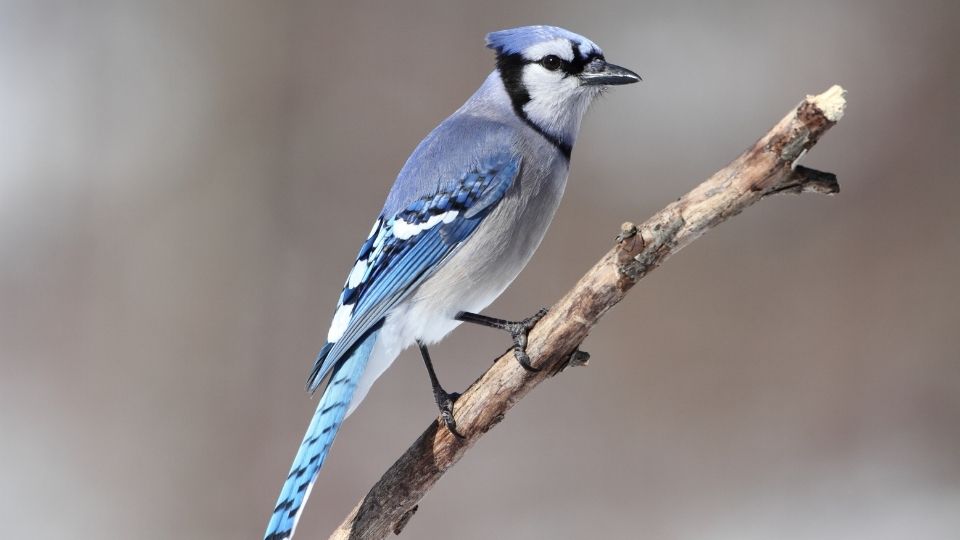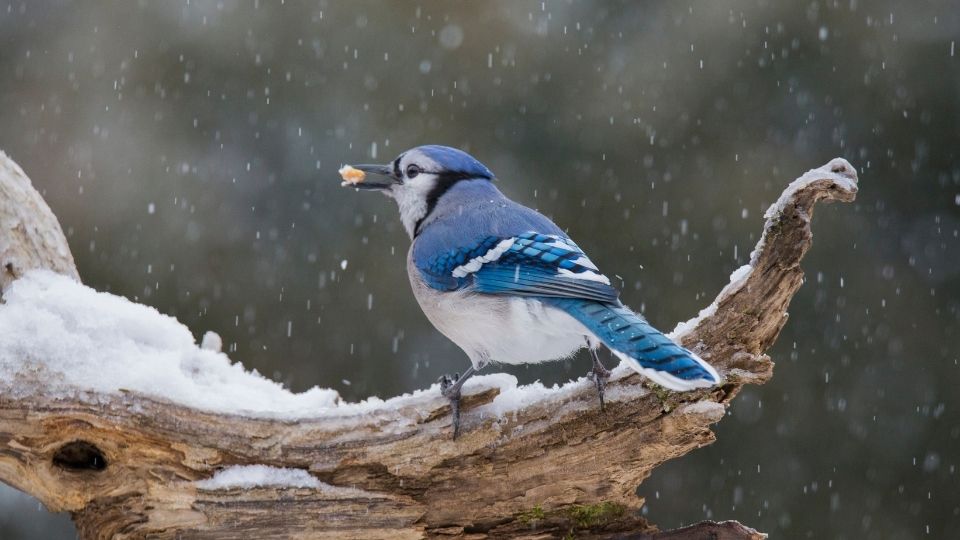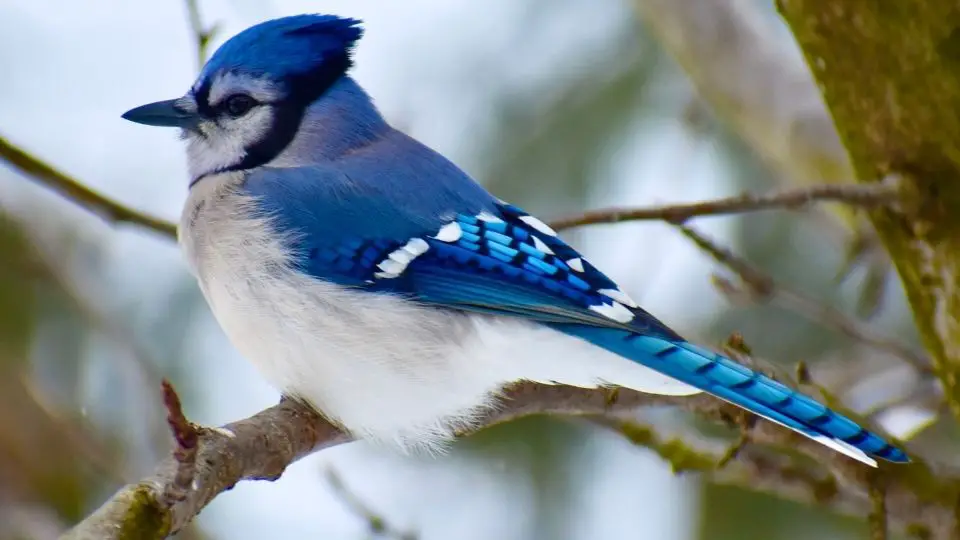Blue Jays have varying migration patterns; while some flocks stay put for the winter season, others do relocate for the Spring Migration, traveling southward over the Great Lakes and the Atlantic Coast.
While some Northern Blue Jays stick around in their breeding grounds during the cold winter months, some younger birds decide to pack it up and head south.
Overall, the migratory patterns of Blue Jays remain a bit of a mystery.
Do Blue Jays Stay Around in the Winter?
Some Blue Jays migrate to warmer temperatures for the winter, while others stick around.
The reasons for their odd migration patterns are a bit of a mystery, but there are some theories.
Some blue jays will migrate south to find more food if food sources are scarce.
Acorns are a big wintertime meal for blue jay, but oak trees don’t produce acorns yearly. Some species of oak trees only produce acorns every 2-3 years, which may be one reason blue jays migrate for the winter.
Another reason that some blue jays stick around in the winter is that they have a good source of nutrition from local bird feeders. Many backyard bird enthusiasts and birdwatchers know that feeding birds in the winter is super important.
Many keep their feeders nicely stocked with sunflower seeds, peanuts, and mealworms in suet to nourish birds in the winter.
Blue Jays will migrate if it lives in an area with little to no food in the winter. This is one possible answer to why some birds migrate, and some don’t.

Do Blue Jays Migrate to Avoid Cold Weather?
Blue Jays do migrate for many reasons, but cold weather isn’t one of them.
These birds are highly adaptable to cold weather in deciduous forests, with many residing in super cold areas of Canada, and colder parts of North America such as Minnesota.
Blue jays can essentially weatherproof their bodies by fluffing up their feathers for better insulation.
They can also put themselves into a hypothermic state that helps conserve energy and stay warm during the cold winter.
If a blue jay migrates in the wintertime, it’s not due to severely cold temperatures!
In the video below, we rounded up 10 of the most fascinating facts about Blue Jays!
How Do Blue Jays Migrate?
Blue Jays travel in loose flocks of up to 50 birds in slow, steady patterns.
Overall, young birds are more likely to migrate than older birds.
While a relatively vocal bird, the Blue Jay travels in quiet flocks as they migrate (take a hint from the Blue Jay, Canadian geese!).
They travel as a group and often take breaks to have a quick snack in areas where they are local food sources or a lucky bird feeder.
If you have ever noticed a group of blue jays hovering around your backyard birdfeeders, it’s likely a group of migrating birds taking a break and refueling.
Do Blue Jays Migrate South?
When Blue Jays migrate, they typically travel south.
Southern winter migration is not due to cold weather but to more available food sources.
Young Jays are more inclined to take the trip because they aren’t as skilled at caching acorns and beechnuts as older jays.
Birdwatchers have noticed that blue jays don’t migrate every year.
One year they may take the trip south, while other years, they decide to stay.

What Range Do the Blue Jays Typically Cover?
Blue Jays are in almost all reaches of North America, but most reside in the eastern United States.
The Northern Blue Jay resides in Southern Canada and lives along the east shoreline and along the Great Lakes (such as Lake Erie).
Places like New York, Florida, Texas, and even the Rocky Mountains have seen Blue Jays dwelling amongst the habitable woodlands. These locations serve as perfect homes for these North American birds.
Blue Jays can adapt to colder temperatures, but many Blue Jays live in Florida full time and live on a diet of snails, bugs, and berries.
They prefer dense deciduous forests with tall trees and plenty of places to hide.
It’s Still A Mystery
The Blue Jay is a fascinating, super-intelligent bird that remains a mystery. Yes, some of them migrate, but not all do.
Sometimes, they migrate for the winter, and other times they stick it out for the winter.
The reason for their unpredictable migration patterns is still a mystery, which is yet another reason to love these unique songbirds.
If you live in the warmer portion of the United States, keep your eyes on your backyard feeders to see if you can spot a Blue Jay visitor!
Seeing a group of Blue Jays hanging around your bird feeders might be a sign that the Blue Jays are migrating on their way to a better destination!

